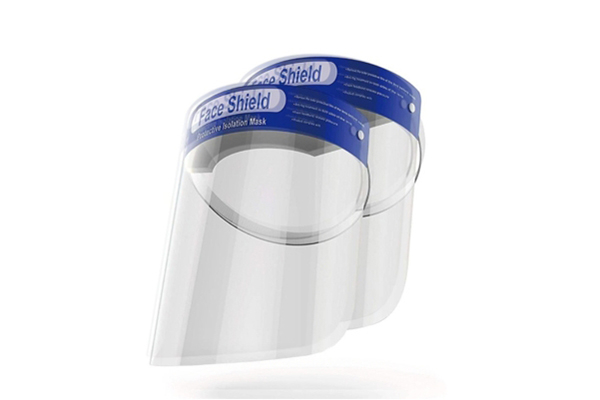The COVID-19 pandemic has brought about significant changes in the way people approach hygiene, safety, and personal protection. Among the various types of personal protective equipment (PPE) that have become widespread, face shields have emerged as a common tool, especially in healthcare settings. Medical face shields are transparent plastic visors that cover the entire face, typically from the forehead to the chin, and are designed to protect the wearer from droplets and splashes. But the question remains: Are medical face shields effective in preventing COVID-19?
1. How COVID-19 Spreads
To understand the effectiveness of face shields, it’s important to first grasp how COVID-19 spreads. The virus primarily transmits from person to person through respiratory droplets that are expelled when an infected person coughs, sneezes, talks, or even breathes. These droplets can enter the body through the mouth, nose, or eyes, leading to infection. Airborne transmission through smaller aerosolized particles can also occur, particularly in enclosed spaces with poor ventilation.
Given these modes of transmission, protective equipment like face masks, shields, and social distancing have been recommended to reduce the risk of exposure to the virus.
2. Functionality of Medical Face Shields
Medical face shields are designed to block respiratory droplets from coming into contact with the wearer’s face, particularly the eyes, nose, and mouth. The transparent shield acts as a barrier between the wearer and potential contaminants in their environment. Face shields offer several advantages in the fight against COVID-19:
- Droplet Protection: Face shields are highly effective at blocking large respiratory droplets, which are the primary mode of COVID-19 transmission. The shield covers the entire face, preventing these droplets from reaching the mucous membranes in the eyes, nose, and mouth.
- Eye Protection: Unlike masks, which only cover the nose and mouth, face shields also protect the eyes. Since respiratory droplets can enter the body through the eyes, this added protection is particularly important for healthcare workers and those in high-risk environments.
- Reusable and Easy to Clean: Face shields can be easily cleaned and disinfected, making them a cost-effective and reusable option for protection. This is particularly beneficial in settings where PPE supplies may be limited.
- Comfort and Communication: Face shields are generally more comfortable to wear for long periods compared to masks, as they don’t restrict breathing or cause discomfort around the mouth and nose. They also allow for better visibility of facial expressions and easier communication, which is essential in healthcare settings.
3. Limitations of Face Shields
While face shields offer several benefits, they also have limitations that must be considered when evaluating their effectiveness in preventing COVID-19 transmission.
- Limited Protection from Aerosols: Face shields provide excellent protection against large droplets but are less effective at blocking smaller airborne particles or aerosols. Aerosols can linger in the air and pass under or around the edges of the face shield, potentially exposing the wearer to the virus. In indoor, poorly ventilated areas where aerosol transmission is a concern, face shields alone may not provide sufficient protection.
- No Fit to Face: Unlike face masks, which fit snugly around the nose and mouth, face shields do not form a tight seal around the face. This allows for the potential entry of virus particles from the sides, top, or bottom of the shield. As a result, many health experts recommend wearing a mask in addition to a face shield for maximum protection.
- Inconsistent Coverage: While face shields cover the front of the face, they leave the sides and back of the head exposed. This incomplete coverage means that the wearer may still be at risk of inhaling airborne particles or coming into contact with surfaces that have been contaminated by respiratory droplets.
4. The Role of Face Shields in Healthcare Settings
In healthcare settings, medical face shields have been widely adopted as part of the PPE ensemble. Healthcare workers, who are frequently exposed to respiratory droplets and other bodily fluids, benefit from the added layer of protection that face shields provide, particularly when performing procedures that generate aerosols, such as intubation or administering nebulized treatments.
However, face shields are not typically used in isolation. They are often worn in combination with masks, gowns, gloves, and other protective gear to create a multi-layered defense against COVID-19. The Centers for Disease Control and Prevention (CDC) and the World Health Organization (WHO) recommend that healthcare workers wear face shields in conjunction with face masks, especially when treating COVID-19 patients or in high-risk environments.
5. Face Shields in the General Population
For the general population, the use of face shields has been less widespread compared to face masks. While face shields offer some level of protection, especially against large respiratory droplets, health experts caution against relying solely on them to prevent COVID-19 transmission. Public health agencies like the CDC continue to recommend face masks as the primary form of protection for the general public, especially in situations where social distancing cannot be maintained.
That said, face shields can be a useful complement to masks, providing added protection in high-risk environments, such as crowded indoor spaces or areas with poor ventilation. They are also a viable alternative for individuals who cannot wear masks due to medical conditions or discomfort, although combining both a shield and a mask is ideal.
6. Conclusion
Medical face shields can be an effective tool in preventing COVID-19 transmission, particularly when it comes to blocking large respiratory droplets and providing eye protection. However, they are not a complete substitute for face masks, especially in situations where airborne transmission of the virus is a concern. For optimal protection, face shields should be used in combination with other preventive measures, including face masks, hand hygiene, and physical distancing. In healthcare settings, where the risk of exposure is higher, face shields play a crucial role as part of a comprehensive PPE strategy, offering an added layer of defense for frontline workers. For the general public, wearing a face shield can provide extra protection but should not replace mask use, particularly in crowded or indoor environments where COVID-19 transmission is more likely.
Post time: 9月-23-2024






